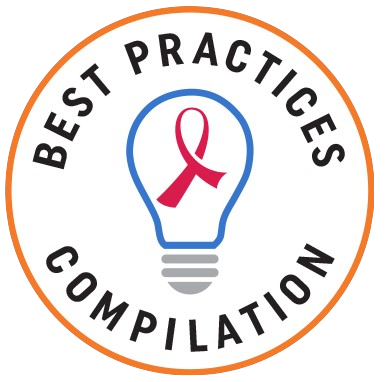In 2020, the Adolescent Quality Learning Network (AQLN), a provider collaborative learning group at the New York State Department of Health AIDS Institute, conducted a quality improvement initiative to improve sexual health in adolescents and young adults. The AQLN identified barriers to sexual health care in four areas: sexual health assessment; receipt of sexual health counseling; three-site sexually transmitted infection (STI) testing (defined as testing at all sites of sexual exposure for gonorrhea, chlamydia, and syphilis); and receipt of STI treatment. The AQLN then tested approaches to address the identified barriers—including opt-out testing, self-rectal swabs, and creating a sex positive environment in the clinic—to improve access and reduce stigma around providing and seeking these services. After one year, the AQLN found improvements in the percentage of clients assessed for sexual health risks, as well as improvements in testing and treatment of STIs.
NY
Sexually transmitted infections have increased among youth and young adults with HIV in New York State, with disproportionately higher rates in Black non-Latino/Hispanic youth and young adults compared to their White non-Latino/Hispanic peers.1 In 2020, the AQLN selected sexual health as their quality improvement focus. As part of the quality improvement initiative, the team conducted root cause analyses that revealed inequities in STI screening due to poverty, provider bias, low health literacy, and stigmatizing attitudes towards sexual activities. Driver diagram exercises identified several possible strategies to improve access to testing and to destigmatize sexual health care including opt-out STI testing, counseling all clients on sexual health, self-rectal swabs, and creating a sex positive environment in the clinic.
Adaptations were made to organizational policy and procedures to remove barriers to sexual health care by improving access and reducing stigma. These adaptations included counseling all clients on sexual health risks; implementing opt-out STI testing instead of opt-in; and improving workflow by incorporating a flag for three-site testing in the electronic medical record.
All clients are assessed and counseled for sexual health risks. By ‘normalizing’ sexual health risk assessment by doing it universally with all clients, this helps to reduce the stigma around STI testing.
Opt-out STI testing helped to normalize the three-site STI testing approach and reduced the stigma of STI tests. The opt-out approach is respectful of the clients’ agency, conveying the importance of the clients’ choice and autonomy.
Providing clients with the option to perform rectal self-swab to test for STIs helped to ease discomfort for clients and providers. Participating providers and programs were educated on instructing clients on rectal self-swabs. Home testing kits for clients provided instructions on collecting and mailing specimens to labs.
A sex positive clinic environment can help to decrease stigma about accessing sexual health services. This includes displaying posters that encourage sexual health discussion (an “Elephant in the Room” poster to promote sex positive conversations), visual cues to help clients discuss what types of sex they are having, and flyers with local STI data in the exam room. Downloadable “Expect the Test” handouts and posters in seven languages are used to normalize testing and let clients know what to expect.
The AQLN launched the sexual health quality improvement project in 2020 with the collaboration of adolescent HIV care agencies throughout New York State. After one year, the AQLN found improvements in the percentage of clients assessed for sexual health risks, as well as improvements in testing and treatment of STIs.
| Category | Information |
|---|---|
| Evaluation data |
|
| Measures |
|
| Results |
|
Source: West N, Odedele O, Zhu A, Heeran B. Equitable Approaches to Improve Sexual Health among Adolescents and Young Adults in New York State HIV Programs. AQLN Ending the HIV Epidemic Summit Poster Presentation, 2023.
Quality improvement initiative to identify barriers and test approaches. The team conducted root cause analyses to understand barriers to STI screening, and tested several strategies to improve access to testing and to destigmatize sexual health care.
Provider education. Staff training helped providers to: improve cultural responsiveness; use non-judgmental communication; provide unbiased STI screening; understand the importance of three-site testing; and take a complete sexual history. Providers were also trained on how to provide instruction to clients on collecting rectal self-swabs.
Partnerships with labs. Partnership with external labs closer to clients' homes (or in clients' neighborhoods) helped increase testing access.
While the quality improvement initiative was supported using RWHAP Part B funding, the participating organizations also have a mix of state and federal funds. Collectively, this funding supports the intervention and changes implemented to destigmatize and normalize STI screening practices, which are now fully integrated into the participating organizations’ procedures.
- Opt-out STI testing requires leadership support. It is important to engage leadership to support recommended STIs standards and procedures.
- Some providers did not want to promote three-site testing because it would require them to administer the rectal test which they found uncomfortable. It is important to inform providers that rectal self-swab is an option and educate them on how to provide instruction to clients on collecting rectal self-swabs.
- Destigmatizing and normalizing STI screening practices are effective in decreasing barriers to sexual health care of adolescents and young adults.

